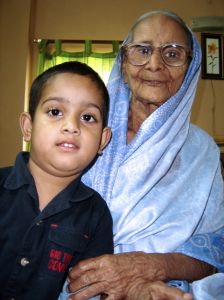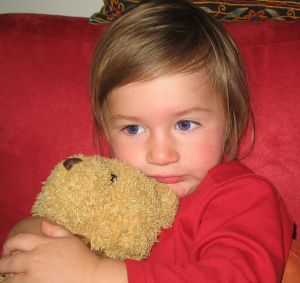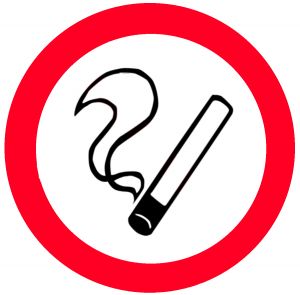By Rita Brhel, managing editor and attachment parenting resource leader (API)
 Natasha Hartley doesn’t see herself as an expert in Attachment Parenting, but the many people who know her say she definitely knows what she’s doing with her four children. Hartley lives in Omaha, Nebraska USA, and shared some of her tips in APing the older child during a May 2011 La Leche League meeting.
Natasha Hartley doesn’t see herself as an expert in Attachment Parenting, but the many people who know her say she definitely knows what she’s doing with her four children. Hartley lives in Omaha, Nebraska USA, and shared some of her tips in APing the older child during a May 2011 La Leche League meeting.
La Leche League International promotes a Loving Guidance ideal, which is similar to Attachment Parenting International’s Principle of Providing Positive Discipline. Both focus on lovingly setting boundaries and disciplining through teaching rather than punitive correction. Much of what Hartley considers to be the overarching idea behind peaceful parenting, for children of all growth stages, is learning about appropriate child development and applying those concepts to the upholding of age-appropriate expectations.
“A lot of it is just being attentive to children and trying to be fulfilling to them,” she said. “When they’re little, parenting is a lot more physical work. As they get older, you think it’ll get easier, but instead of being physical work, it’s a lot more mental work.”
Hartley gains much of her parenting inspiration from the book, Peaceful Parents, Peaceful Kids by Naomi Drew. From the 17 keys found in this book, these are the ones Hartley finds most helpful now that her oldest children, twin girls, are eight years old and many of the parenting techniques useful with babies and toddlers, and even preschoolers, no longer relate:
- Peace Begins with the Parent — Family and personal balance is pivotal in helping parents meet the remaining Principles of Parenting. A parent must feel refreshed herself before she can give total, undivided loving attention to her children. “After eight years, I realize that I need to take some mom time. I hope I can help other [parents] learn to do this earlier,” Hartley said, advising the primary caregiving parent to take at least 15 to 30 minutes a day for some me-time. Until that time, if the home environment is getting intense, she suggests remembering to take a moment before confronting a situation to say a positive comment like “I am a good parent; I am a positive parent.” If every day seems stressful, Hartley advises learning to live a simpler life, such as avoiding over-scheduling, getting more organized, and establishing daily routines.
- Make the Home a Place of Kind Words — Ban negativity in the home. This includes not only perspectives of people outside the home, such as the erratic driver in the next lane, but especially in how parents and children communicate to each other within the family. Examine phrases so that a behavior is addressed, rather than implying that there’s something wrong with a person; this likely means focusing on “I” phrases, such as “I need this room to be picked up” rather than “You’re so messy,” or “I need it to be a little quieter right now” rather than “You’re so loud.”
- Encourage Positive Behaviors, but Avoid Praise — Praise, such as “good boy [or girl],” is not as powerful in teaching children as is encouraging specific behaviors through encouragement, such as “I like how you cleaned up your toys.” Hartley suggests keeping a list of positive behaviors specific to each child, to read through during times of difficulty.
- Spend One-on-One Time with Each Child, Every Day — Each child needs at least 15 minutes a day of one-on-one time with each parent, where the parent is keenly listening and interacting positively and not trying to do a household chore or something on the computer at the same time. This time should be during an activity that the child enjoys doing with the parent, or that is entirely child-led.
- Be Clear on Expectations, and Honor Them — Come together and decide as a family what the principles of the home will be, and then be consistent in upholding those standards. As children grow older, they’ll take more responsibility in shaping the guidelines needed to follow the standards. It’s a good idea to begin holding family meetings when the child is very young, but it’s essential as the child grows older and has more opinions separate from his parents; this doesn’t mean that every idea thrown out by the child is an option but that the child has input into family matters.
- Say “No” When Needed, but Phrased in Options — When upholding family principles, there will be times when you will need to say “no” to your child, but rather than phrase it as a straight “no,” follow it up with options that the child can do.
- Provide Children Empty Spaces of Time when They Can Just Be Kids — Especially when children spend the majority of their day in school outside the home, and therefore have to follow rules that may be different or more strict than what they have at home, children benefit from having time to not have to listen to any adults, even Mom and Dad.
- Develop “Cool Off” Lists — Writing a list of ways to handle anger is great for both parents and children, especially as they grow older. Brainstorm together to come up with ideas to express anger in a more positive way, such as drawing or writing in a feelings journal or yelling into a pillow. It’s critical that parents make it a rule to resolve conflicts peacefully — telling the truth, being respectful, using nonviolent communication or reflective listening, taking responsibility, compromising, and seeking forgiveness — so they can then teach by example to their children.
- Be a Good Listener — You want your children to listen to you, but you also need to make sure you’re modeling good listening skills to them: looking at the speaker, making eye contact, not interrupting, being open to other ideas, letting the speaker tell his story and not making it about yourself, and focusing on what the speaker is saying.


 Skippyjon Jones is a Siamese cat, and he needs a timeout to think about that. Skippyjon Jones, written by Judy Schachner, is a wonderfully imaginative little kitty who likes to pretend he is a Chihuahua. This rubs his mama’s fur the wrong way, and he frequently gets put in a timeout to “think about just what it means to be a Siamese cat.”
Skippyjon Jones is a Siamese cat, and he needs a timeout to think about that. Skippyjon Jones, written by Judy Schachner, is a wonderfully imaginative little kitty who likes to pretend he is a Chihuahua. This rubs his mama’s fur the wrong way, and he frequently gets put in a timeout to “think about just what it means to be a Siamese cat.” This analogy should help to make it clear that the spanking argument, like the one on smoking, is based on false assumptions and leads to illogical conclusions. Some children, like some smokers, are less affected than others because of a natural emotional resiliency, just as Mr. Burns must have had physical resilience. Some children, like some smokers, are less harmed than others because of mitigating factors, such as the presence of other adults who treat them with love and care. To the extent that a spanked child is really “fine,” it is in spite of, not because of, the punishments they have received. Mr. Burns must have had mitigating factors, too. Perhaps his strict regimen of daily exercise helped him to fare better than other smokers, or perhaps he inherited a strong constitution.
This analogy should help to make it clear that the spanking argument, like the one on smoking, is based on false assumptions and leads to illogical conclusions. Some children, like some smokers, are less affected than others because of a natural emotional resiliency, just as Mr. Burns must have had physical resilience. Some children, like some smokers, are less harmed than others because of mitigating factors, such as the presence of other adults who treat them with love and care. To the extent that a spanked child is really “fine,” it is in spite of, not because of, the punishments they have received. Mr. Burns must have had mitigating factors, too. Perhaps his strict regimen of daily exercise helped him to fare better than other smokers, or perhaps he inherited a strong constitution. Are you tired of holding the bedroom door handle closed when your school-aged child is trying to leave during a timeout? Fed up with your child trashing his room during timeout? Frustrated because you can’t get your child to calm down and think about restitution during his timeout?
Are you tired of holding the bedroom door handle closed when your school-aged child is trying to leave during a timeout? Fed up with your child trashing his room during timeout? Frustrated because you can’t get your child to calm down and think about restitution during his timeout? We know the
We know the  Some years ago, my oldest son forgot his shoes on a routine trip to the grocery store. We’d struggled with the “shoe issue” for a while, and I hadn’t come up with a workable solution to help him remember to bring his shoes when we had errands to run. Frequently, we’d have to double back to the house to retrieve a pair, and I’d be impatient and irritable. This day, I decided to let him take charge. We arrived at the store and, sure enough, his shoes were nowhere to be found. He ended up wearing his little sister’s flip-flops for the (mercifully short) shopping trip. He never again forgot his shoes.
Some years ago, my oldest son forgot his shoes on a routine trip to the grocery store. We’d struggled with the “shoe issue” for a while, and I hadn’t come up with a workable solution to help him remember to bring his shoes when we had errands to run. Frequently, we’d have to double back to the house to retrieve a pair, and I’d be impatient and irritable. This day, I decided to let him take charge. We arrived at the store and, sure enough, his shoes were nowhere to be found. He ended up wearing his little sister’s flip-flops for the (mercifully short) shopping trip. He never again forgot his shoes.